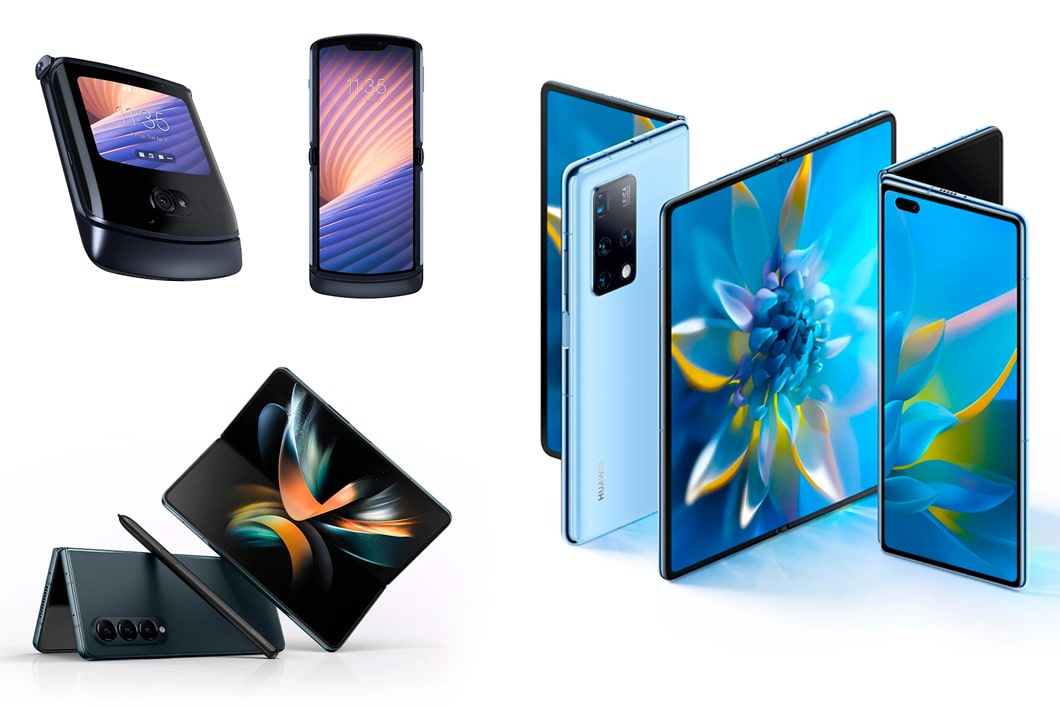
Some of the most revolutionary technologies in smartphones that have emerged in recent years are 5G connectivity, foldable displays, multiple camera systems, in-display fingerprint sensors, fast charging etc. Let's take a closer look at flexible screens.
Who was the first to show a smartphone with a flexible screen?
The first five smartphone manufacturers to release devices with flexible screens were:
- Samsung: Samsung introduced the Galaxy Fold in 2019, which featured a foldable display and marked Samsung's entry into the foldable smartphone market.
- Huawei: Huawei released the Mate X in 2019, a foldable smartphone with an outward-folding display that offered a large 8-inch screen when unfolded.
- Motorola: Motorola launched the razr (2019) in 2019, a foldable smartphone that paid homage to the iconic Moto Razr flip phone. It featured a foldable display that folded vertically in a clamshell design.
- Royole: Royole unveiled the FlexPai in 2018, making it the first commercially available foldable smartphone.
- Xiaomi: Xiaomi entered the foldable smartphone market with the Mi Mix Fold in 2021. The Mi Mix Fold featured an inward-folding display and boasted impressive specifications, including a large screen and powerful camera capabilities.
These five manufacturers played a significant role in the early stages of introducing smartphones with flexible screens, showcasing different form factors and design approaches to folding displays.

Advantages of smartphones with flexible screens
Smartphones with flexible screens offer several advantages over traditional rigid displays. Here are some of the key benefits:
- Enhanced Screen Real Estate: Flexible screens enable larger display sizes without sacrificing portability. When unfolded or expanded, the screen area increases, providing users with a more immersive viewing experience for multimedia content, gaming, productivity, and multitasking.
- Improved Portability: The ability to fold or roll the screen makes smartphones with flexible displays more compact and easier to carry. When folded, they occupy less space, fitting comfortably in pockets or bags, and reducing the risk of damage to the screen during transportation.
- Multitasking and Productivity: Flexible screens open up new possibilities for multitasking and productivity. Users can simultaneously view multiple apps or content side by side, transforming their device into a mini tablet-like interface. This feature is particularly useful for professionals who need to work on documents, compare information, or use multiple apps simultaneously.
- Durability and Resistance: Flexible display technology often incorporates durable materials like plastic substrates, which can withstand bending and twisting without easily cracking or breaking. This makes smartphones with flexible screens more resistant to accidental drops or impacts, enhancing their overall durability.
- Innovative Form Factors: Flexible screens enable innovative form factors beyond the traditional candy bar design. Manufacturers can explore various designs, such as clamshell or flip phones, tablets that fold into smartphones, or devices with unique folding mechanisms, offering consumers more options to choose from based on their preferences and needs.
- Immersive Media Consumption: The larger screen area and wider aspect ratio of flexible displays enhance the viewing experience for multimedia content like videos, movies, and games. Users can enjoy more immersive visuals and a more cinematic feel, thanks to the expanded display space.

While smartphones with flexible screens bring numerous advantages, it's worth noting that they may also have some limitations, such as higher costs, potential concerns regarding durability over long-term use, and the need for further advancements in manufacturing processes. Nonetheless, these devices represent a significant step forward in smartphone technology, pushing the boundaries of design and user experience.